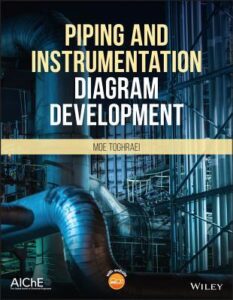Piping and Instrumentation Diagram Development
Piping and Instrumentation Diagram Development
Piping and Instrumentation Diagram Developmentis an important resource that offers the fundamental information needed for designers of process plants as well as a guide for other interested professionals. The author offers a proven, systemic approach to present the concepts of P&ID development which previously were deemed to be graspable only during practicing and not through training.
This comprehensive text offers the information needed in order to create P&ID for a variety of chemical industries such as: oil and gas industries; water and wastewater treatment industries; and food industries. The author outlines the basic development rules of piping and instrumentation diagram (P&ID) and describes in detail the three main components of a process plant: equipment and other process items, control system, and utility system. Each step of the way, the text explores the skills needed to excel at P&ID, includes a wealth of illustrative examples, and describes the most effective practices.
You can Read Also Pump Installation & Maintenance
Piping and Instrumentation Diagram Development Content
- Preface
![Piping and Instrumentation Diagram Development]()
- Acknowledgement
- About the Companion Website
- Fundamentals of P&ID Development
- What Is P&ID
- Management of P&ID Development
- Anatomy of a P&ID Sheet
- General Rules in Drawing of P&IDs
- Principles of P&ID Development
- Pipes and Equipment
- Manual Valves and Automatic Valves
- Provisions for Ease of Maintenance
- Containers
- Pumps and Compressors
- Heat Transfer Units
- Pressure Relief Devices
- Fundamentals of Instrumentation and Control
- Application of Control Architectures
- Plant Process Control
- Plant Interlocks and Alarms
- Ancillary Systems and Additional Considerations
- General Procedures
One reason is the practical nature of this skill. A large number of books written for working professionals are authored by university professors. The skill of P&ID development however is not pure theoretical knowledge. It is a combination of technical skills and other considera-tions like ease of operation, ease of maintenance, client preferences, and jurisdictional codes.
Download


Comments are closed.